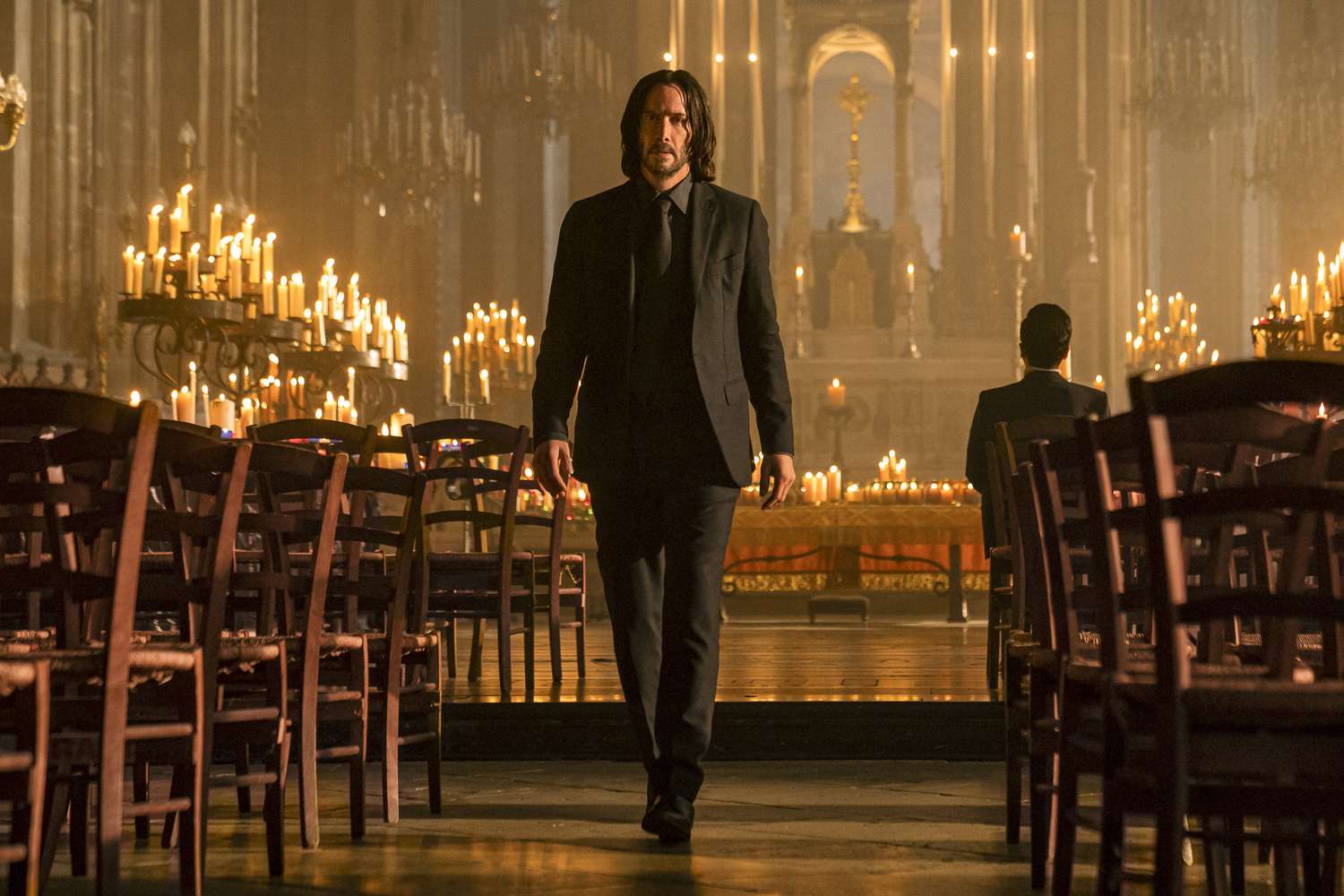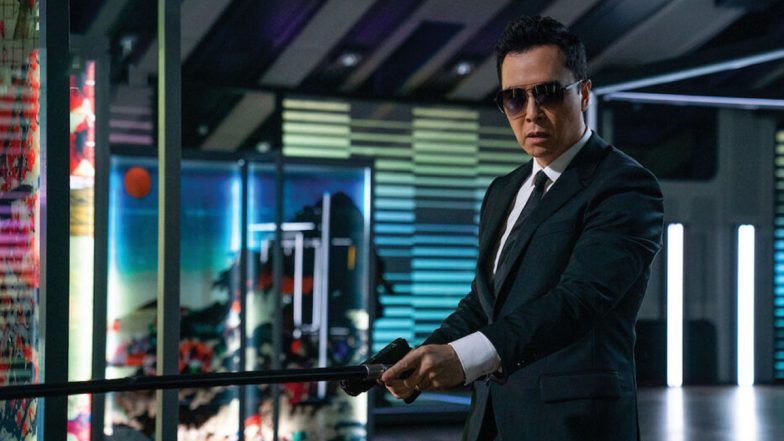John Wick: Chapter 4 is a straight-to-the-point title, and the film follows suit. Nearly all hard-hitting action with very little filler, it’s the most intense John Wick film yet.
Since the series’ inception, stunt-forward action films like John Wick have become a hot commodity. The proliferation of CGI-filled action spectacle, and resulting audience fatigue of this approach, has opened up the opportunity for films to embrace the possibilities of practical action sequences. Films like those in the John Wick series not only celebrate traditional action stunt work, they are built around it.
John Wick: Chapter 4
Directed By: Chad Stahelski
Written By: Shay Hatten, Michael Finch
Starring: Keanu Reeves, Donnie Yen, Bill Skarsgard, Ian McShane
Release Date: March 24, 2023
More importantly, with modern filmmaking technology, and the experience that has come with the development of film all over the world, it means these action stunts aren’t just shootouts or car chase sequences. Things are becoming much more complicated, and just like the push for CGI dominance we saw in blockbusters a decade ago, we are now seeing an arms race in the world of high-production stunt-forward action movies. John Wick: Chapter 4 is the latest attempt for stunt-filled action movies to blow away everything that has come before it, and in that regard it succeeds.
The John Wick franchise has slowly built itself up from a somewhat simplistic but hard-hitting tale of revenge. Every sequel has placed its protagonist against increasingly slim odds and watched him fight his way out. John Wick Chapter 4 is no exception. Like its predecessors it starts right after the last film ended. It introduces new high-level bad guys whom Wick must bring down if he has any hope of continuing to complete his revenge, let alone survive. Similarly, as the film unfolds, we learn more about the criminal underworld Wick inhabits.

Part of the genius of the John Wick franchise is that it is always very selective with its worldbuilding. It provides the audience with clues about John’s past and the people he worked for, but only gradually. This allows the films to not only continuously surprise the audience with a varied and wide-ranging cast of new characters, but it allows the films to maintain high stakes. Just as we see Wick complete one task, his to-do list grows. This demand upon the character grows and grows, and that creates a frenzied and desperate tone to the action sequences upon which the films hang their hat.
In Chapter 4, John Wick (Keanu Reeves) emerges from the shadows to plot revenge against The Table, the governing body of the criminal underworld which previously attempted to put a high price on his head. With the help of Winston (Ian Mcshane) and The Bowery King (Laurence Fishburne) – both of whom have a new-found grudge against The Table – they hatch a desperate plan to get back what each of them has lost. Against them is the Marquis Vincent de Gramont (Bill Skarsgard), a French crime lord who has been given Carte Blanche to track down and kill John Wick. The Marquis blackmails Caine (Donnie Yen), another skilled assassin and friend of John Wick, to put an end to the ploy.
From the 20 minute mark to the final tense showdown, John Wick: Chapter 4 is an almost unrelenting single action sequence. Unlike in the previous films, there is less attention paid to the build-up and preparation of these fight sequences. Instead, the film just casually propels its protagonist from one brawl to the next. While this is exciting to watch and an incredibly impressive technical accomplishment, it is somewhat taxing. Not only is the film 3 hours long, but the lack of breaks and opportunities for reflection result in the film having an almost monotonous tone.

It is almost as if instead of building to an intense fight sequence, the entire film exists at that heightened sense of struggle. John Wick’s body count is astronomical, and as a result it pushes him towards the territory of a faceless killing machine. Perhaps the film is relying too heavily on the audience’s connection with the character from the previous installments that it doesn’t really provide us with the same reasons to feel as sympathetic towards his cause this time around. Wick primarily jumps between pure survival mode and being a blunt instrument of death at the service of others.
I think part of the issue is the film’s push to go more international. Certainly the last two films had Wick working abroad, but the New York setting of the original film was always home base. Chapter 4 does without this, and combined with the new antagonists, there is less of a familiar foundation upon which the film can build John’s legacy. But the flip side, and reason I think the filmmakers chose this approach, is being able to push the character into new places. We all know a good sequel can’t repeat what has been done before. John Wick: Chapter 4 brings John Wick into new settings without leaving behind what made the previous films so entertaining.
One aspect of the script which I appreciated the most was how most of the supporting characters had mixed loyalties. Caine and a new character named Mr. Nobody are fighting to kill John Wick just as much as they were trying to keep him alive. The film does a tremendous job of flip-flopping character motivations based on a particular situation, without it ever feeling too much like deus Ex Machina. Not only does this result in some impressive action scene twists, but it seems to speak to the inspiration John Wick instills with his personal integrity in the face of certain death.
Despite being the main protagonist and having the most screen time, Keanu’s John Wick scarcely says a word in this round. He’s too busy fighting to stay alive. The series’ action sequences have long been its main draw, and here that focus on finely-choreographed violence in the midst of high-contrast neon-lit settings remains. But this time it’s much more excessive than before. John Wick’s stamina now borders on superhero territory (as does his ability to avoid major injuries) as he faces an unrelenting onslaught of attackers for the entire run time of the film.

One important change is that the high-tech bullet-proof suit worn by Reeves in the previous two films is now standard issue to seemingly ALL his enemies as well. This places an additional complexity which Wick must overcome, and it makes the action a bit less fluid than it was in previous installments. Likewise, the action in this round feels more akin to carefully-articulated big song and dance numbers than traditional action sequences. The sets feel like they are purposefully crafted to heighten the intensity (and artistic quality) of the action sequences rather than just existing organically.
As Wick’s combat extends from a rave, to the middle of traffic, to a very long set of stairs, the film’s drive peeters out somewhere in the middle. Despite impeccable action and some interesting innovations (including a top-down shootout sequence), the film’s push to go harder makes it feel like more of an exercise of doubling down than building to true epic territory. I suppose that approach matches the fearless nature of one John Wick himself, stubbornly refusing to back down.

